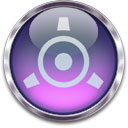Best of Reaktor User Library December 2.006

Effects
2 Echogeraete v1.0
By Dieter Zobel
2 simple delay toys
***
EchHase v1.0
By Dieter Zobel
delay effect
thanks to Herrn Fleischmann for the
delicious Delayrium machine
***
Ez FFT Christmas Collection v1.1
By Stephan Schmitt
Advanced FFT processors and building blocks
Hi everybody, it's Christmas and we have a little surprise for the Reaktor community:
I would like to present this collection of FFT effects and modules developed by Gabriel Mulzer and Martijn Deluxe (and partwise myself) during the last weeks.
Reaktor 5 has been released quiet a time ago and it will take some more time until we can release Reaktor 6. But this collection shows, how you can open up a new dimension in the development of Reaktor instruments and effects, when you combine creativity and know-how.
***
Graphical Compressor / Distortion vII v1.1
By Chris List
New and improved version of my Graphical Compressor. 2 years in the making...
This is the new and improved version of my Graphical Compressor. This instrument represents about 2 years of work (on and off), I started it when R5 was still in beta. Most of that time was spent building the GUI, I hope you enjoy it.
Update 2.1
-----------
- Corrected the scale of the input/output meters (they were off)
- Decided to change the way the output metering for the individual channels worked (it now includes the gain-offset)
- Added a few more comments to knobs and things
Features:
- Bezier curves(!)
- Completely custom peak-level meters
- zoom and scroll of the main edit window
- “Adaptive” compression mode = smoother compression when you want a transparent compression sound.
- “library” to save your favorite gain-curves
- core –based compression algorithm using gain-transfer function look-up table means very low CPU usage.
- lots of wiz-bang GUI features
- Crossover uses Martinj Zwartjes’ phase-linear filters.
- Lower CPU than the orignal thanks to core and multi-diplays
NOTE: The current version is *BETA*. I have only done some very basic testing on it. I post it here because I’ve been working on it for so long that I just wanted to get it out there, and to get feedback and have some people check it out for bugs.
- When using the ensemble as a plug-in (as you most often will), you’ll want to delete the “deck” instrument and connect the audio-in module to the L/R inputs on the compressor.
- The instrument comes with no documentation, but the knobs and things are pretty well documented. Expect documentation to come in a future release. Please ask me questions via email so I can get a feel for what is most confusing about the instrument. If you have any question, try checking out v1 of the GCD as it has more documentation. The first thing I would recommend reading is the pop-up help for the main GUI, the "Edit Range" knob, and the "Scale" knob.
Like GCD v1, the attack and release times can go all the way down to 0ms. Anything below about 10ms will create distortion, hence the name “graphical compressor / distortion". When used with higher attack/release times, and "normal looking" gain curves, it should be as distortion free and smooth as any other digital compressor.
Planned enhancements;
- Mono and side-chain modes
- Nicer GUI for the cross-over
- Look-ahead limiting
- Skinning the background and maybe the knobs
Big ups to the Reaktor community for helping me stay motivated!
CList
clist@mindspring.com
Loop and Beat Machines
BeatLoopUp Live Tool v1.0
By Oliver Greschke
BeatMasher for usage in Host Programms like Live, Cubase
This is a very basic but effective version of the beatlookup tool from clist, see http://www.native-instruments.com/forum_de/showthread.php?t=30930&highlight=exile.
I liked the original tool very much, but I wanted to have something simpler, which I can use in a host program as a plugin fx. I actually use it in Ableton Live and Cubase together with the fabulous Kore Controller, and it is getting more and more like an instrument to me.
The main alternation is the way you can play this tool ... If you don't press any button the original sound gets played, if you press a (KeyControl) button either the Multi-Buffer or the storageSampler gets mangled. So it is working similar to a korg kaoss pad.
***
Snapshot
Music is Math v1.3
By Stefan Knauthe
50 Snaps for Weedwacker R5
Hello again, here is my second attempt at synthesizer programming, this time a bank of 50 snaps for Weedwacker R5. It has a similar flavour as my Rubiter work, noisy pads and athmos and some weird leads also. So take it for your next Warp-release (:)) and for your experiments at home.
There are some small issues i discovered on this ensemble:
- the global modulation amount parameter MW is not stored properly
- when you select a snap sometimes your hear nothing, then just twist the cutoff knob a lttle, no idea were that comes from...
The fx-section here is very basic, i recommend the use of some reverb or chorus or something like that...
***
Synthesizers
Dark Adder v1.0
By James Clark
Adds up to cool sounds!
An additive synth based on a fast sine bank generator, using the trig identity:
sin(nx)=2cos(x)sin((n-1)x)-sin((n-2)x)
Borrowed the distortion unit from the OKI Computer V2 synth in the NI library.
Comes with a pre-loaded table with 20 different harmonics sets. Different harmonics sets can be morphed, providing sweeping dynamic sounds.
***
Sim Synth v1.0
By Jonathan Style
3 Osc Synth. 3 Env & LFO. Modulation Matrix
This is Simple synth I created for pads and soft Leads I have updated in the last few days and decided to post it. The Osc's have a standard waveforms plus a few mixed such as Saw/Sine etc. The also features an on/off switch to the instrument. I find to this save CPU when I am not using it.
J.
The Bender wheel is from stephan V. The knobs are from Bernd Keil's numerous post in the Last few weeks...
***
The Thermostat v1.0
By Sean Colletta
Another experiment in "analog warmth"
Introducing the Thermostat! Turn up the thermostat for warm, thick "analogish" sound - turn it down for cool clear digital. Basically just a simple synth to illustrate this concept. Others have mentioned on the boards that adding a bit of noise to both the pitch and amplitude of an oscillator can create a feel of analog warmth. I experimented with the concept a bit, and came up with this setup which works. I estimate that it can add up to about 40% of the warmth of an analog synth ... just a guess lol. The added warmth is best heard not by comparing notes side-by-side (though you can hear it that way - allow some time for the reverb if you do though), but rather by comparing longer recorded improvisations, with the thermostat set at 0 and 1. I find the thermostat at 1 to be too thick and noisy - i like it around 0.65. You can uncouple the thermostat master controls from the inputs inside the pitch warmer and amp warmer macros to get finer control. You can have 4 controls total ... amplitude percent randomness and deviation, and the same for pitch. Amp and pitch random percent can go from 0-1. Amp deviation from 0 to 0.01, and pitch dev from 0 - 0.1 - anything more on either will give noticeable noise. I coupled all the the controls to the master thermostat for ease of demonstration. One note about the synth - the voice combiners are inside the reverb, to allow for an attack to be added to the reverberated sound (to reduce noisiness on sounds with low amp env attacks).
